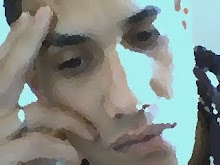Physical therapy is a branch of medicine that specializes in the remediation of impairments and promotion of mobility, quality of life, and function. This specialty achieves its objective by using examination, diagnosis, and physical intervention, which uses movements and mechanical forces. Physical therapy is also called physiotherapy and the abbreviation PT is often used heavily by professionals. When in need of the best physical therapy Cambridge is the best location to consider visiting.
The medical practitioners who specialize in physiotherapy are referred to as physiotherapists or physical therapists. The former term is used more in most countries around the world. Hydrotherapy, massage, and manual therapy techniques are believed to have been advocated for by several physicians as far back as 460 BC. Galen and Hippocrates were some of the major advocates during that time. The first documented origins of physiotherapy as a profession was done in 1813 by Per Henrik Ling.
The field of physiotherapy involves injuries and illnesses that impair mobility and functionality in people. Diagnoses are made based on physical examinations and medical histories of patients. Management plans are formulated after a diagnosis has been determined. Diagnostic techniques like MRI findings, X-rays, and CT scan may be based on to formulate management plans if necessary.
Nerve conduction velocity testing, electromyograms and similar electrodiagnostic testing techniques may also be used. Management plans in physiotherapy include prescription of or assistance with certain measures that relieve lack of functionality. Such measures may include manual therapy and manipulation, education, mechanical devices, physical agents, and specific exercises. Each of the measures is tailored to the specific needs of each individual.
Among commonly prescribed physical agents are heat, cold, sound waves, rays, radiation, and electricity among many others. In the modern profession, assistive devices are also prescribed heavily. Orthoses and prostheses are some of the assistive devices prescribed commonly. The general public is often educated on prevention of immobility. Lifestyle elements predisposing the general public to immobility are usually emphasized a lot in education programs.
Another responsibility of physiotherapists is prevention of loss of mobility before it occurs. They have to work closely to patients to do this. They have to formulate fitness and wellness-oriented programs that are in line with healthy living. These programs support an active lifestyle. In the course of their work, physiotherapists work with different populations to alleviate various factors threatening mobility. Such factors comprise of diseases, injury, environmental factors, and aging.
As a professional career, physiotherapy has several specialties for practitioners to specialize in. Some of these specialties include geriatrics, orthopedics, pediatrics, cardiopulmonary, sports, neurology, wound care, EMG, and female health. Training at the lower levels remains similar in all the specialties, with specialization starting at the third year of medical school. Neurological rehabilitation is a relatively new specialty that is becoming popular very fast.
Practitioners in this field work in several different settings, including outpatient clinics, health and wellness clinics, skilled nursing facilities, rehabilitation hospital facilities, schools, private homes, and hospices. They also work in education and research centers, sports training facilities, fitness centers, and private physiotherapy clinics. Most sports teams often have a physiotherapy making part of the medical team.
The medical practitioners who specialize in physiotherapy are referred to as physiotherapists or physical therapists. The former term is used more in most countries around the world. Hydrotherapy, massage, and manual therapy techniques are believed to have been advocated for by several physicians as far back as 460 BC. Galen and Hippocrates were some of the major advocates during that time. The first documented origins of physiotherapy as a profession was done in 1813 by Per Henrik Ling.
The field of physiotherapy involves injuries and illnesses that impair mobility and functionality in people. Diagnoses are made based on physical examinations and medical histories of patients. Management plans are formulated after a diagnosis has been determined. Diagnostic techniques like MRI findings, X-rays, and CT scan may be based on to formulate management plans if necessary.
Nerve conduction velocity testing, electromyograms and similar electrodiagnostic testing techniques may also be used. Management plans in physiotherapy include prescription of or assistance with certain measures that relieve lack of functionality. Such measures may include manual therapy and manipulation, education, mechanical devices, physical agents, and specific exercises. Each of the measures is tailored to the specific needs of each individual.
Among commonly prescribed physical agents are heat, cold, sound waves, rays, radiation, and electricity among many others. In the modern profession, assistive devices are also prescribed heavily. Orthoses and prostheses are some of the assistive devices prescribed commonly. The general public is often educated on prevention of immobility. Lifestyle elements predisposing the general public to immobility are usually emphasized a lot in education programs.
Another responsibility of physiotherapists is prevention of loss of mobility before it occurs. They have to work closely to patients to do this. They have to formulate fitness and wellness-oriented programs that are in line with healthy living. These programs support an active lifestyle. In the course of their work, physiotherapists work with different populations to alleviate various factors threatening mobility. Such factors comprise of diseases, injury, environmental factors, and aging.
As a professional career, physiotherapy has several specialties for practitioners to specialize in. Some of these specialties include geriatrics, orthopedics, pediatrics, cardiopulmonary, sports, neurology, wound care, EMG, and female health. Training at the lower levels remains similar in all the specialties, with specialization starting at the third year of medical school. Neurological rehabilitation is a relatively new specialty that is becoming popular very fast.
Practitioners in this field work in several different settings, including outpatient clinics, health and wellness clinics, skilled nursing facilities, rehabilitation hospital facilities, schools, private homes, and hospices. They also work in education and research centers, sports training facilities, fitness centers, and private physiotherapy clinics. Most sports teams often have a physiotherapy making part of the medical team.
About the Author:
You can get a summary of important things to keep in mind when choosing a physical therapy Cambridge professional at http://accelpt.com right now.


